Gretl is primarily a fashion photographer, but she was shooting a wedding where I was a guest, and she really caught my eye. I was so impressed by how she worked – professional, friendly, relaxed, she made it all about the couple and not about her. And the fact that she had her cameras slung from a belt under her baby bump made her the coolest wedding photographer I’ve ever seen. I wanted to know more.
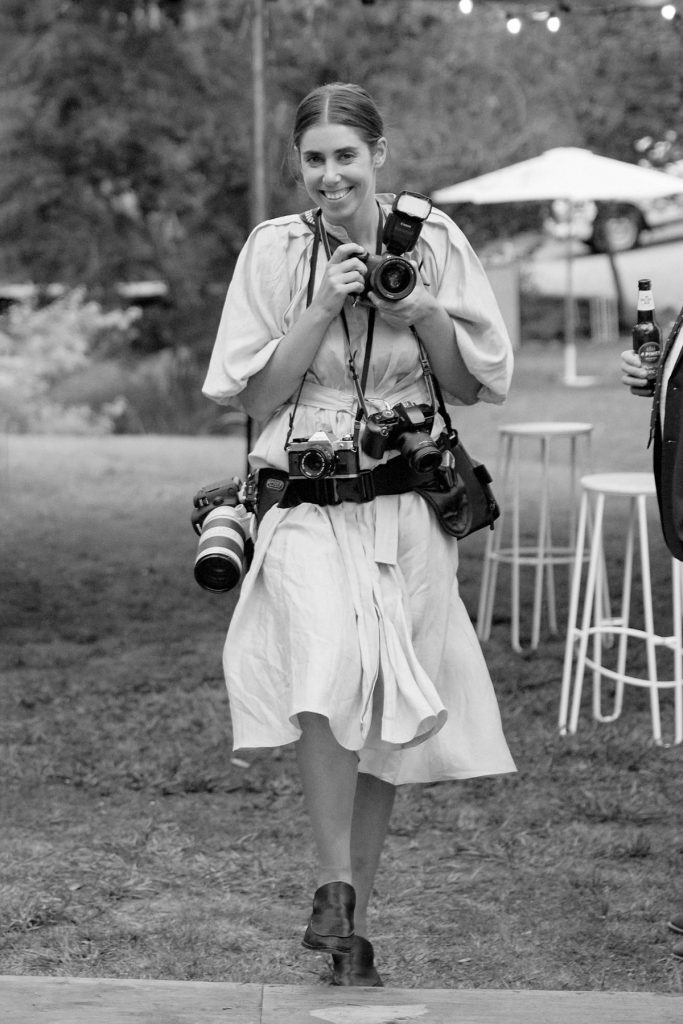
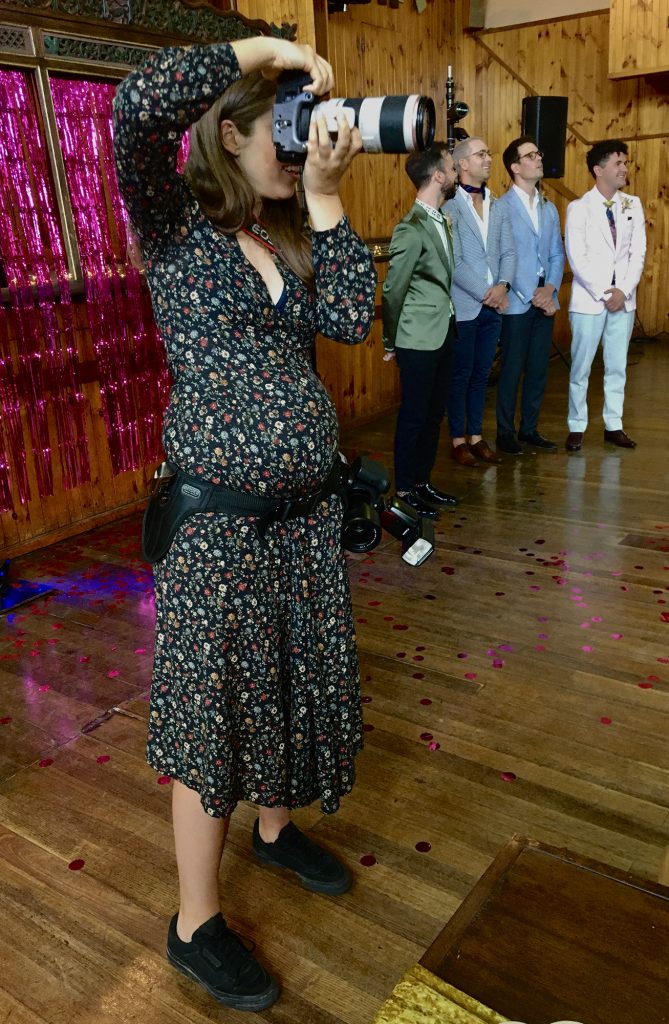
Gretl – thanks for agreeing to the chat. Before we move on to your work and career, can we just talk for a moment about your approach to shooting a wedding?
“Generally a couple will pick me because of the photos I put out on Instagram, and mine are the more natural, candid sort of photos. Yes, I think “candid” is a word that describes it. They’ll say, “Oh, I’ve seen your work, I like it and I just want to enjoy the day.” So I become a fly on the wall. Sometimes I’ll give a bit of direction, because people are generally a bit camera shy. But then we ease into it and they do things on their own as a couple. My main focus is to just catch the vibe of the day – the reactions between the bride and groom without any interference at all.”
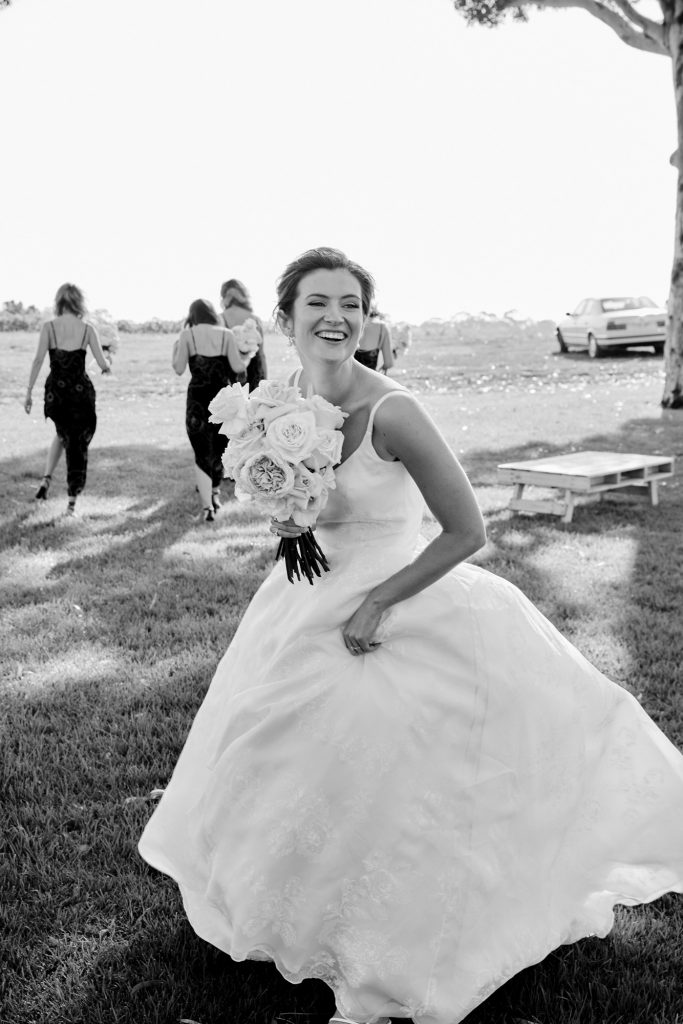
Can you tell us how that happened? How you developed your approach?
“Well, wedding was the last part of my practice – I’ve only been doing it for four years now. I guess if anything I’m surprised that there’s not more of us doing it like that. I think, for people of my generation there’s actually something a bit daggy about the posed photos; or perhaps dated? That seems like a more 80s or 90s vibe. And that stems also from a time before digital photography where you had a limited number of shots so you had to set them up, whereas today, I mean, you can shoot as much as you want. And perhaps people just have not caught up with that with the progress of what’s happened. There are a few of us doing this style – on Instagram I do follow like-minded wedding photographers for inspiration and to admire their skills – but yeah, they’re not the majority.”
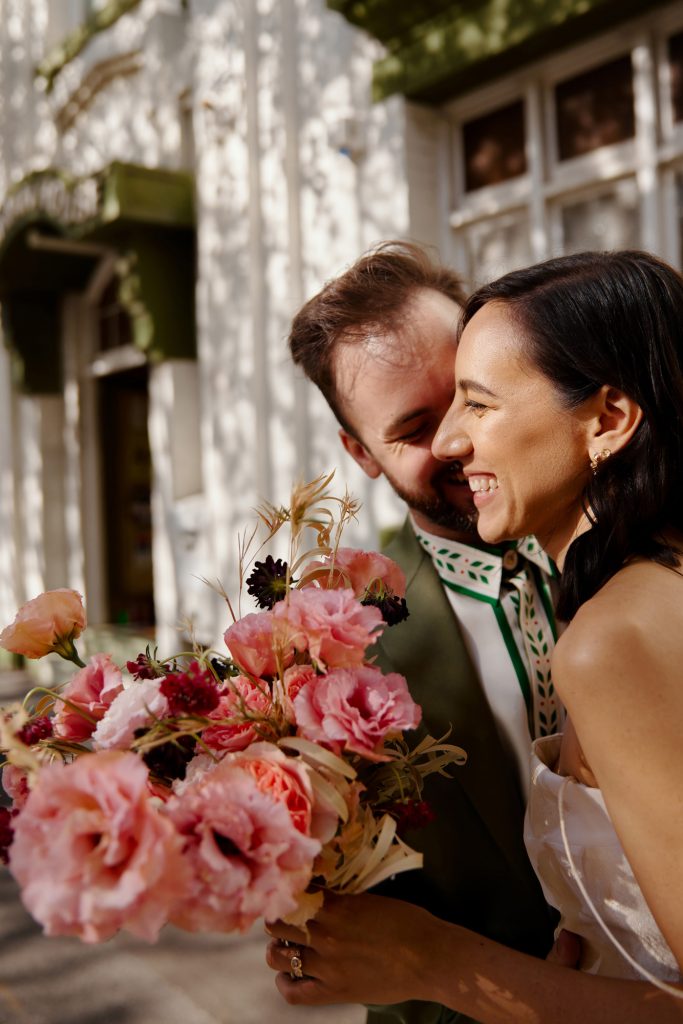
Great. Now might be a good time to jump in to how you began in photography and how you moved into fashion.
“I started out as a graphic designer. I have a degree in Visual Communications and moved straight into fashion through a contact, and I was working full time as a designer with a company who had an in-house photographer. So I learned a lot about editing photos, and I was putting together look-books and editing those. That photographer left, and I’d said to the directors I wouldn’t mind doing some photos just for the blog, and so the combination of that, and the fact the next photographer they hired did not really gel with the organisation meant that the directors encouraged me to step into the role. And so I had some one-on-one training from a few photographers but I really felt like a fish out of water at that time. I loved photography, and fashion photography in particular, but it was very daunting to try to step in to that role. I was getting a lot of inspiration from Tumblr for photography and graphic layouts at the time. So I had these lessons, and some lighting lessons, and I sat in on photo shoots from other photographers, and then the directors said, “Okay Gretl, you’ve been learning long enough; now you need to start doing it.” And being pushed into it – as daunting as that is – really does make you learn a lot of things really quickly; mostly from mistakes actually! I mean, I’d look at maybe my first three years of full-time fashion photography and just cringe.”
Well that’s interesting for many reasons. Clearly the client – your bosses – were happy with the work, and yet you’re dissatisfied and striving to improve. So you have this eye – I mean you’ve come from a visual background and you’re now applying that aesthetic to in a new area with a new skillset but there’s still the striving to improve. And also this idea “Oh – they forced me to be a fashion photographer…” Lots of people who aspire to a career in photography would see shooting fashion as the pinnacle.
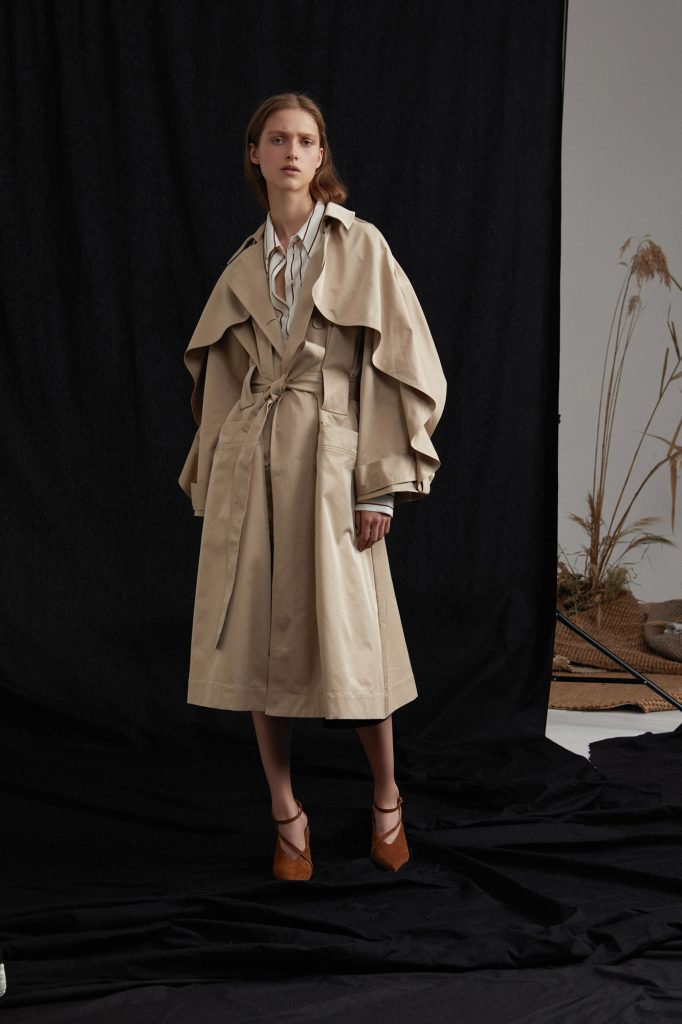
“I think it’s like many areas of the arts. It’s about how long you work on a skill. Talent alone does not make you good, you really need to work and be self-critical every time you shoot. Especially in a studio environment with studio lighting. In many ways it’s harder than natural light because you control it. So you need to learn to be in complete control, to work out why things are going right or going wrong. It just takes time, and many, many failings to work it out, and even now I’m still learning.”
I want to ask you about this change – a shift if you like – from graphic design over to photography. Did you feel like you’d found something special in photography – or was it just another job?
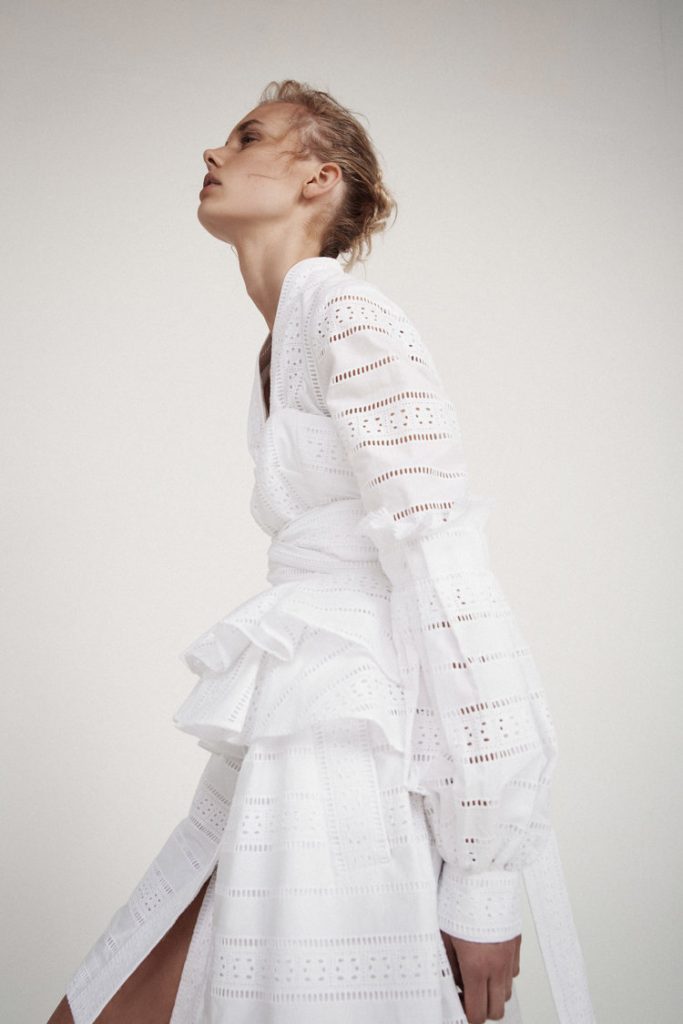
“Coming into photography I already had a passion for appreciating it. Particularly fashion. I loved fashion and I really loved and appreciated the best of the photography in that area. And I loved the female image – the female form. It didn’t matter if was pure fashion or more of an art thing, I just felt a strong affinity for the form.”
Do you have any heroes of fashion photography?
“Not really – at the time it was just browsing Tumblr mainly – it was just picking up inspiration and on that platform it’s not so much about the author I suppose. I guess that sounds a bit unsophisticated.”
Maybe it’s just changing times – I mean in the old days we got it through books. I’d pick up a book and it might be David Bailey or Helmut Newton, but you knew who it was. Which brings up another theme – photographing your tribe. In the old days it was all blokes photographing women, but there’s something I remember Nan Goldin saying – for a photo to be authentic it has to be your tribe. Do you think there’s a shift in women photographing women’s fashion? I don’t know if it’s even a relevant question, but I have the idea that I – as an old bloke – couldn’t do it today; it’s not my tribe. If I did it even with the best intentions in the world it would still be inherently creepy.
“I do think about that a bit more now – especially on set. Generally these days on set it’s an all female crew, and It does seem to me to be – like you say – less creepy. I guess there’s less of a risk that the model feels exploited. It’s just something I feel – I’m not sure about it, but it does seem to reduce the chances of a model who feels a bit vulnerable doing something they’re not comfortable with – even if they are not able to express that at the time.”
Could we talk a bit now about the process of making the photos? You’ve given us a great sense of what you appreciate in a good photo, but what about the process of making it?”
“Oh – I love the process. I think it took a few years to get to the point where I enjoyed it just because I felt so terrified and out of my depth while I was doing it. Now when I approach a shoot I know how to direct, I know how to light it. I can really take the time to set it up exactly how I want the light to fall. I guess that’s an area where my passion has changed too, now that I can control it a lot more. So I find a lot of joy in the process. But it’s also very collaborative; I mean, after all I have to sell the clothes they’re wearing. And I have the client brief – that’s in the back of my mind. But I love the challenge of creating a lighting setup that the client aspires to. So that side I really enjoy now, whereas in the early days I didn’t.”
Ha – that’s amazing you can say, “the first few years I was dong it I was terrified,” because of course being a fashion photographer is like the top of the tree for many photographers and it’s what they aspire to. So what are your tips and handy hints for people who are starting out and wanting to find their way?
“Oh – if you’re serious then the best thing is obviously practice practice practice, but you should also reach out to the model agencies and offer to do test shoots with the models. I still do that; I only do paid ones these days but I still do them. Just to practice with a model. Practicing with friends is not the same as practising on a model; especially in fashion. There’s something about fashion models – the way the light falls on their face – I mean; that’s why they’re models. It’s a medium, and you can’t get it practising on your friends. And getting noticed means having that portfolio. You don’t have to overthink it – a 30 minute session here or there is fine if you have a good idea about lighting. Lighting’s a big one. people don’t think about that enough. But yes – it comes back to the portfolio. People aren’t going to invest in you unless they see what you can do. But it’s hard for me to tell people what to do and how to do it because I feel like I had a lot of luck along the way.”
Well, we all have luck to a degree I guess, but it seems you’ve backed up any luck you’ve had with a lot of passion, dedication and hard work. That was such a great chat thanks Gretl and I feel that there are valuable lessons there for anyone who’s serious about finding their own path. Thanks again.
To see more of Gretl’s work, go to https://www.gretlwb.com
or view her Insta accounts:
https://www.instagram.com/gretlwb_photo/
https://www.instagram.com/gretlwb_weddings/
Images and text Copyright Gretl Watson-Blazewicz and David Hume